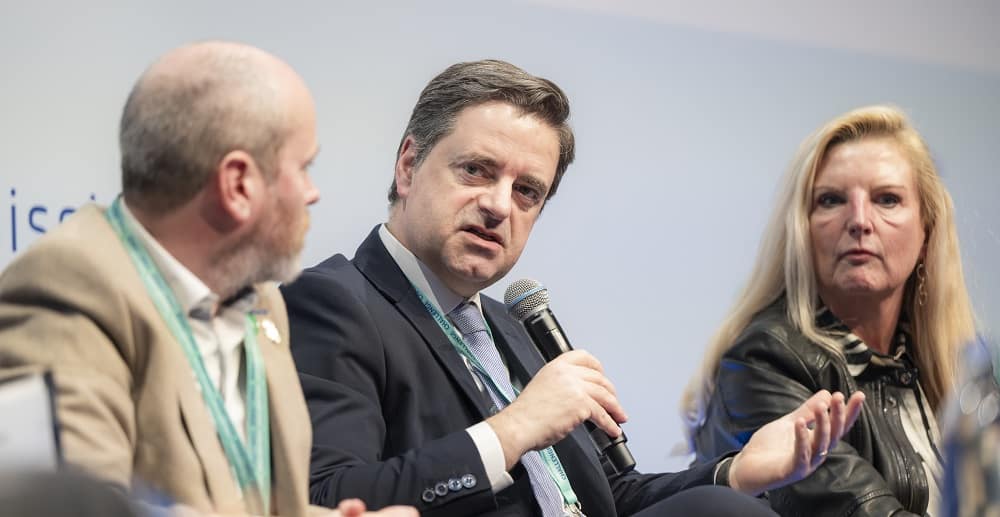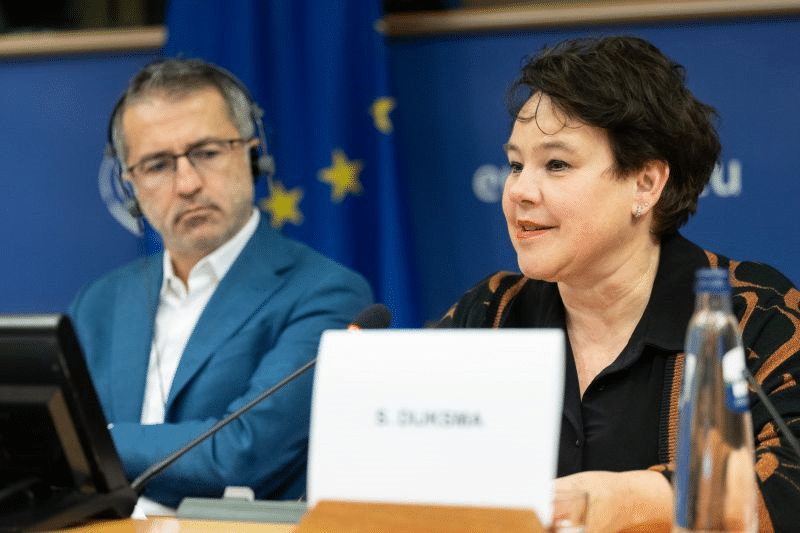Reading Time: 8 minutes
Cities drive EU partnerships and urban governance reform
With over 75% of Europeans living in urban areas, city governments are central to delivering essential public services and tackling urgent challenges like climate change and social inequality. Cities implement over 70% of climate policies and 90% of climate adaptation actions, and account for €8 of every €10 spent on environmental measures.
Despite this vital role, local governments face shrinking budgets, limited influence over national and EU policy agendas, and persistent barriers to accessing centralised EU funds.
In the past year, cities have responded by strengthening their governance structures and deepening collaboration with regional, national and EU levels of government. Internally, they have focused on boosting their capacity, fostering innovation, and protecting and enhancing democratic values.
As the new EU leadership has taken office, mayors also anticipate that the EU’s new policy agenda for cities will reinforce urban governance and secure more direct access to funding in the post-2027 EU budget.
According to the Eurocities Pulse Mayors Survey 2025, most mayors see improvements in city-EU cooperation but continue to face barriers in accessing EU funds. They also cite budget pressures and bureaucratic hurdles, often linked to constraints at national and EU levels.

Ricardo Rio, Mayor of Braga, speaking at the EU Mayor Business Forum 2025.
Establishing a unified, clear EU framework for cities
As the new EU institutions set a fresh direction for the Union, Eurocities is working to ensure that cities are recognised as strategic partners in building a prosperous, sustainable and resilient Europe.
Cities are already central to the delivery of European priorities. Through the Urban Agenda for the EU and its Thematic Partnerships, covering topics such as food, tourism, housing and green infrastructure, they collaborate with other levels of government to address pressing societal challenges.
A major milestone came with the appointment of Raffaele Fitto in December 2024 as the European Commission’s first Executive Vice-President for Cohesion and Reforms. His mandate to develop “an ambitious policy agenda for cities” is a strong signal of the growing recognition of cities’ role in achieving EU objectives.
In March 2025, mayors in the Eurocities Shadow Commission met with Vice-President Fitto to propose the creation of a formal EU-city strategic partnership. This partnership would be geared towards tackling Europe’s major challenges, from climate action and the housing crisis to urban competitiveness, innovation and security.
With the European Commission developing a new policy agenda for cities, it is of utmost importance to match these ambitious EU policies with the adequate resources cities need to implement them.
– André Sobczak, Eurocities Secretary General
To ensure this partnership delivers, city leaders are calling for a unified EU governance framework for cities. This would consolidate the many existing urban initiatives under a single, coherent structure and provide cities with a simplified toolbox to implement local policies effectively.
Cities also propose the establishment of an annual EU Mayors Summit and the creation of a dedicated Cities Directorate within the European Commission, supported by thematic urban teams to implement the Urban Agenda.
Political momentum for these objectives is growing. Meetings between newly appointed EU Commissioners and the Eurocities Shadow Commission are already under way, and cities welcome the creation of a new European Urban Forum in the European Parliament. With 30% of new MEPs having city government experience, there is momentum for urban voices to be better heard at the EU level.

Natalia Chueca, Mayor of Zaragoza, states cities’ key role in EU competitivenss at EU Mayors Business Forum. Photo credits: Julie de Bellaing.
Empowering cities in the next EU budget
At the same time, the EU must ensure that cities are not seen merely as beneficiaries of the next EU budget for 2028-2034, but are closely involved in co-designing its funding programmes alongside the EU institutions and national governments.
As outlined in the latest Eurocities Pulse Mayors Survey, only 28% of mayors report financial independence. This is due to EU funds being centrally distributed to national governments, which limits cities’ ability to respond to local needs.
Cities cannot be sidelined when it comes to critical EU investment tools.
– Sharon Dijksma, Mayor of Utrecht and Eurocities Shadow Commissioner on Cohesion Policy
To reverse this trend, cities call for direct access to EU funds and a greater say in the design and implementation of a stronger EU Cohesion Policy, with cohesion funding specifically earmarked for local governments.
To build cities’ capacity and harness their potential as drivers of innovation, growth and competitiveness, cities also want the EU to provide them with targeted resources for urban innovation.
This includes support and funding for cities in the upcoming Competitiveness Fund, a dedicated EU urban investment platform, and recognition of cities central role in shaping and implementing the next EU research and innovation programme.

At the European Parliament, Sharon Dijksma, Mayor of Utrecht, calls for a strong urban dimension in the next EU Cohesion Policy.
Harnessing public innovation in cities
As part of its work to better understand the potential for innovation within city administrations, Eurocities collaborated with leading international research centre LSE Cities on a comprehensive new analysis. This resulted in the new report, Public Innovation: Building Capacity in Europe’s City Governments, written by LSE Cities in collaboration with Eurocities and Bloomberg Philanthropies.
Launched in November 2024 in the European Parliament, the report explains that city governments face barriers such as limited funding, rigid structures, and lack of political support. It calls for stronger leadership, better partnerships, and more EU investment to build lasting innovation capacity in city governments.
The report is based on a Eurocities Pulse Survey of 65 chief innovation officers in 27 European cities, providing unique insights into local government innovation across Europe.
Innovation doesn’t happen by chance, you have to build up your innovation muscles. Cities need committed leaders who prioritise innovation beyond just service delivery.
– Ben Rogers, Bloomberg Distinguished Fellow in Government Innovation, at LSE Cities
Cities unite to protect democratic values
Amid rising authoritarianism, war, and democratic backsliding, European city leaders continue to stand together to protect democratic for values and reject discrimination.
In the Eurocities Pulse Mayors Survey, mayors state that reinforcing democracy and citizen participation was one of their major successes in 2024.
In May 2024, mayors signed the declaration The Values that Unite Us, making it clear that they are committed to a democratic, inclusive society.
European mayors stand side by side with the Mayor of Istanbul, Ekrem İmamoğlu.
– Burkhard Jung, Mayor of Leipzig
Mayors demonstrated these principles in March 2025, when Ekrem İmamoğlu, Mayor of Istanbul, was illegally imprisoned in Turkey for his democratic leadership. City leaders called on Turkish authorities to immediately release Mayor İmamoğlu and guarantee respect for human rights in Turkey. To date, over 80 mayors have signed a declaration of support.
Most recently, in April 2025, city leaders adopted the Eurocities Leipzig declaration on local democracy at the Upgrading Local Democracy event in Leipzig, which gathered city leaders, from across Europe to rethink and reinvigorate democratic practices from the ground up.
Driving democratic participation and innovation
Cities also continue to lead experimentation to defend and innovate democracy, with the aim of ensuring a more inclusive and transparent EU.
The CitiObs project, for example, connects and supports Citizen Observatories that enable citizens to share data on issues like air quality, noise levels and biodiversity. This crowd-sourced information empowers communities and provides policymakers with valuable insights to inform decision-making. This year, the project will meet policymakers at national and EU levels to demonstrate how citizen science can support the implementation of key European legislation, such as the revised Ambient Air Quality Directive.
Meanwhile, the Nets4Dem project is fostering networks of academics, practitioners and civil society to advance democratic innovation. Through its innovative Democracy Labs, led by Eurocities, city officials are equipped with tools to enhance participatory governance and mainstream democratic practices across urban policymaking. Two Democracy Labs have been held to date: on digital democracy in Barcelona, and on climate democracy in Grenoble.
